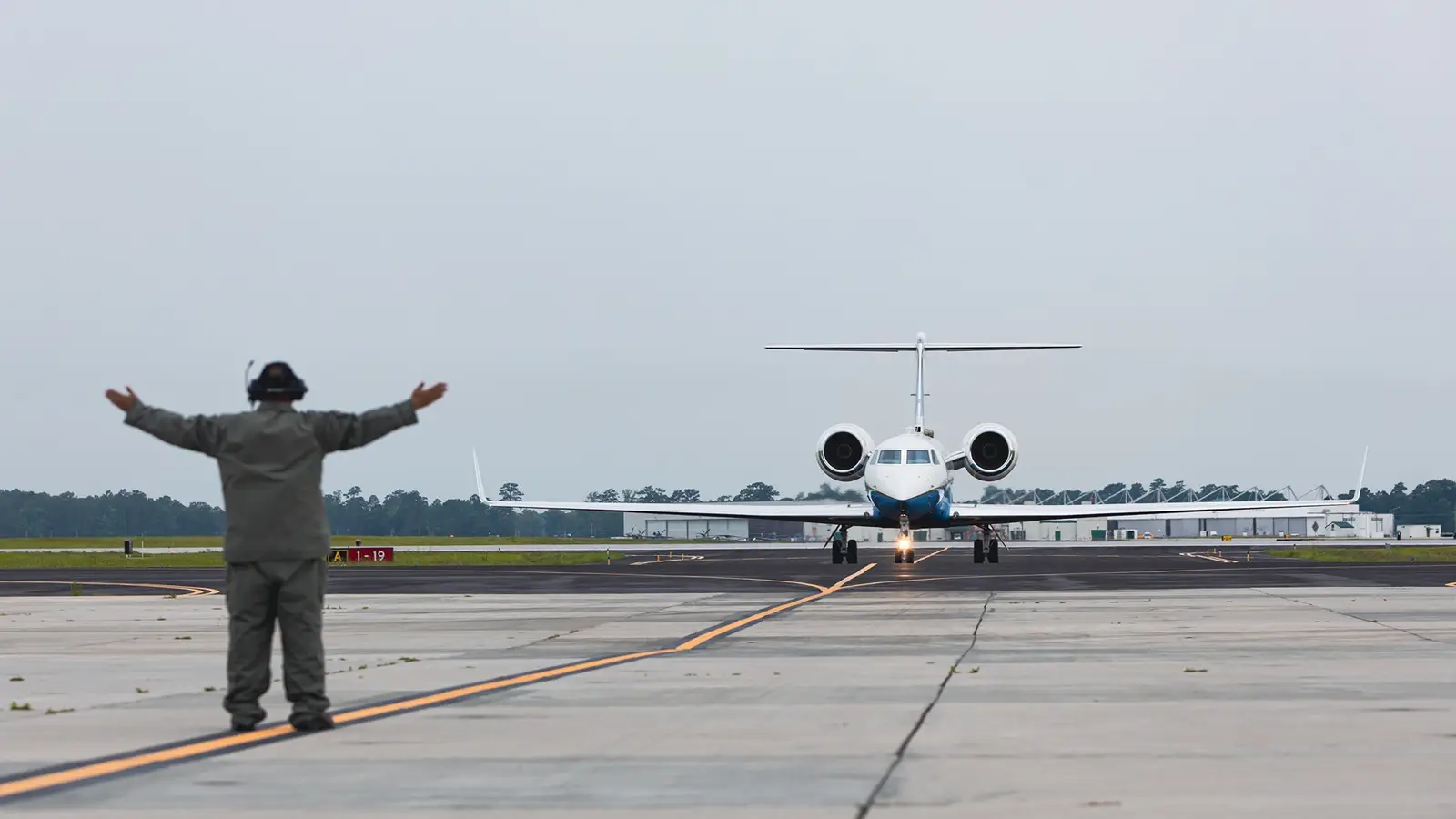
In the ongoing roller coaster of defense budgets for 2026, a new development has emerged courtesy of the US Air Force and The War Zone. Specifically, the most recent development regard business jets being outfitted as aerial tankers to aid in the ongoing push to recapitalize the tanker fleet.
The idea may sound strange, but it isn’t a foreign one to the world’s largest air force. The hundreds-strong fleet of aerial tankers is aging due to the bulk of the force being mid-century Boeing KC-135 Stratotanker and KC-10 Extenders. The USAF already operates a number of Gulfstream and Bombardier-based “bizjet” platforms that fit the profile.
Tactical Bizjets & NGAS
The KC-46A Pegasus is currently the star child of the drive to refresh the USAF tanker fleet with a modern, efficient, and more capable tanker platform. The Pegasus, however, is not the ultimate solution. The Next Generation Air Refueling System, or NGAS, is in development as a low-observable (i.e. stealth) tanker but no public information has been released that indicates it is forthcoming in the near future.
As an immediate, actionable, and value-adding asset, bizjet tankers offer capability enhancements in a rapid timeline. The USAF flies Gulfstream V-based transports for the President and other VIPs designated as the C-37A. The service also operates a unique variant of the Bombardier Global 6000 as a battlefield communications node dubbed the E-11A, and another Gulfstream 550-based electronic warfare jet, the E-37A Compass Call.
General John Lamontagne, head of Air Mobility Command (AMC), commented to TWZ among other outlets earlier this month regarding the potential for business jet tankers to join the force:
“We are working on the Next Generation Air Refueling System, NGAS, as it’s effectively known. Put the finishing touches on that last year. And that was a really wide look at how we would do air refueling in the future. When I say a wide look, looking at conventional tankers [as] we know it today, you know something like a [KC-]135 or KC-46 as is; something with a bunch of mission systems added to it, with a defense systems [sic], connectivity, intelligence and more; a business jet; a blended wing body; or a signature-managed [stealthy] tanker.”
Looking To COTS For The Next-Gen
The idea of leveraging commercial off the shelf (COTS) parts has been integral to reducing costs and increasing efficiency, reliability, and readiness in new US Armed Forces platforms in recent years. That include the Boeing 737-based P-8A Poseidon of the US Navy and the 767-based KC-46 Pegasus of the USAF. These platforms offer higher capability at a lower cost than their predecessors thanks to a global supply chain established by their commercial counterparts.
The obvious downside of a bizjet tanker is fuel capacity. A Gulfstream has a fraction of the volume that a 767 has to offer in its fuselage. Taking away space to install a boom of drogue fuel probes would limit the total usable space further. On the other hand, a fully developed platform that can be purchased off the lot (or tarmac) avoids the cost and a time sink required to develop a tailor-made platform from scratch following the defense procurement cycle.
Resurrecting The ACE Tanker
Bombardier previously pitched its miniature C-17, the KC-390 Millennium, as a tanker option to the USAF but with no reception. Despite, the negativity, Bombardier has continued to advocate the merits of its lighter, yet capable platform to help the USAF recapitalize with an efficient, modern platform that doesn’t compromise on capability and capacity.
The War Zone also covered Bombardier’s unsuccessful but persistent efforts. In terms of performance and capability, there’s no arguing that a KC-390 is a far superior tanker to a Gulfstream full of gas. Acquiring the jet would, however, demand far more capital as well as new supply chain and training pipeline for both aircrew and ground crew.
The capital investment would seem to be the primary issue leading the USAF to consider bizjets in the first place which lends context to the reluctance behind the KC-390s unsuccessful bids. We can only wait and see how the Air Force budget and force recomposition pans out under the gudiance of a mercurial and impulsive Secretary of Defense, Congress, and President.



